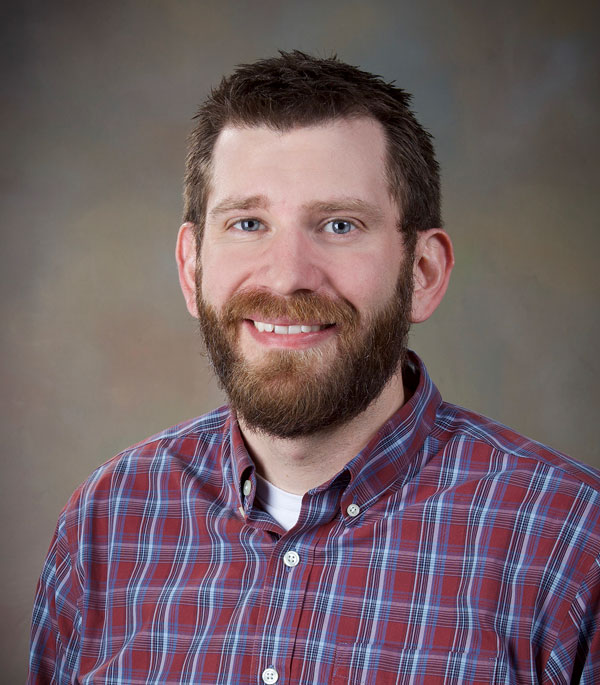
Sandia engineer Kyle Fuerschbach has been named the 2019 Kevin P. Thompson Optical Design Innovator Award recipient by the Optical Society. The award recognizes significant early-career contributions to lens design, optical engineering or metrology.
Kyle was recognized for his groundbreaking work in developing freeform optical surfaces that can be used to create lighter, more compact and more effective optical devices than are currently available.
While conducting graduate research in 2011, Kyle performed a computer simulation that placed a common surface deformation on a computer model of the James Webb Space Telescope. During the simulation, he noted a behavioral aberration that he traced to the nodal aberration theory developed by Kevin Thompson in 1979. Kyle’s historic observation solved an analytic puzzle that had been worked on by leaders in the field for more than 100 years.
Kyle expanded the NAT theory for freeform optics in his PhD work, co-inventing, devising, manufacturing components for, assembling and aligning an optical system to conclusively validate his discovery and designing, specifying, testing and assembling the first imaging optical system using the expanded theory.
Applications for Kyle’s design methods are numerous. They include 3D imaging and visualization, augmented and virtual reality, infrared and military optical systems, automotive and LED lighting, energy research, remote sensing, semiconductor manufacturing and inspection, and medical and assistive technologies.
“Kyle Fuerschbach, at an early stage of his career, has had a remarkable influence on the design and fabrication of complex optical systems,” said 2019 OSA President Ursula Gibson. “His innovative approach and achievements are truly worthy of the Thompson Optical Design Award.”
At Sandia, Kyle researches the design, fabrication and assembly of complex optical systems. His focus is on realization of optical payloads for remote sensing applications, with an emphasis on developing novel systems that are compact and manufacturable.
Kyle received his doctorate in optics from the University of Rochester in 2014, and his bachelor’s degree in optical sciences and engineering from the University of Arizona in 2008.